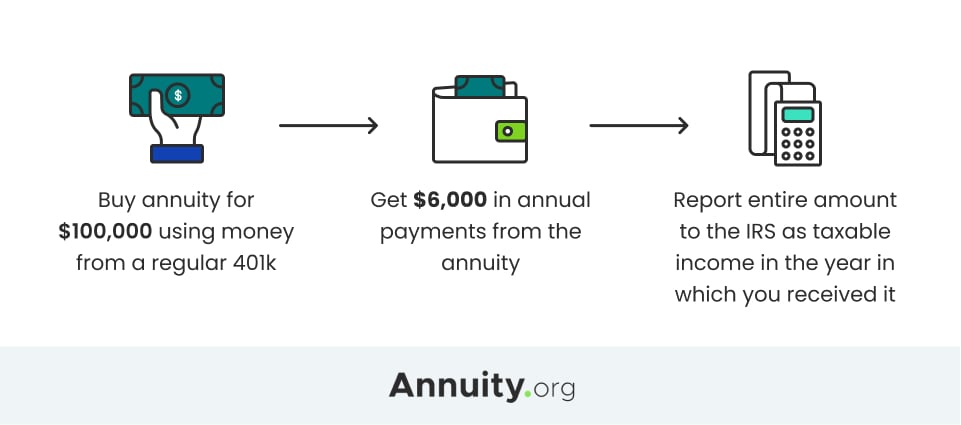All Categories
Featured
Table of Contents
This five-year general rule and two adhering to exemptions apply just when the owner's death sets off the payment. Annuitant-driven payouts are talked about below. The initial exemption to the basic five-year guideline for private beneficiaries is to approve the fatality advantage over a longer duration, not to go beyond the anticipated lifetime of the beneficiary.
If the beneficiary elects to take the survivor benefit in this method, the benefits are exhausted like any type of various other annuity settlements: partially as tax-free return of principal and partially taxable earnings. The exemption proportion is located by utilizing the dead contractholder's price basis and the expected payments based on the beneficiary's life span (of shorter duration, if that is what the beneficiary selects).
In this approach, sometimes called a "stretch annuity", the recipient takes a withdrawal annually-- the called for amount of annually's withdrawal is based on the exact same tables utilized to calculate the needed circulations from an individual retirement account. There are 2 advantages to this method. One, the account is not annuitized so the beneficiary retains control over the cash money worth in the contract.
The 2nd exemption to the five-year rule is readily available just to an enduring spouse. If the marked beneficiary is the contractholder's spouse, the partner might choose to "enter the shoes" of the decedent. Basically, the spouse is treated as if he or she were the proprietor of the annuity from its creation.
Are inherited Annuity Cash Value taxable income
Please note this applies only if the partner is named as a "assigned recipient"; it is not available, for example, if a trust is the beneficiary and the partner is the trustee. The general five-year rule and both exemptions just put on owner-driven annuities, not annuitant-driven agreements. Annuitant-driven agreements will pay survivor benefit when the annuitant dies.

For purposes of this discussion, assume that the annuitant and the owner are different - Annuity death benefits. If the contract is annuitant-driven and the annuitant dies, the fatality triggers the death benefits and the beneficiary has 60 days to make a decision just how to take the survivor benefit based on the terms of the annuity contract
Likewise note that the option of a spouse to "enter the footwear" of the proprietor will not be offered-- that exemption uses just when the owner has actually passed away yet the proprietor didn't die in the circumstances, the annuitant did. If the beneficiary is under age 59, the "death" exception to prevent the 10% penalty will certainly not apply to an early circulation again, since that is readily available only on the fatality of the contractholder (not the death of the annuitant).
Actually, many annuity firms have internal underwriting policies that refuse to release contracts that name a different owner and annuitant. (There might be weird circumstances in which an annuitant-driven contract fulfills a clients distinct requirements, however generally the tax drawbacks will certainly exceed the benefits - Guaranteed annuities.) Jointly-owned annuities may posture similar problems-- or at the very least they might not offer the estate planning feature that various other jointly-held assets do
Therefore, the death benefits must be paid within 5 years of the very first owner's death, or subject to both exemptions (annuitization or spousal continuation). If an annuity is held collectively in between a couple it would show up that if one were to pass away, the other might merely proceed possession under the spousal continuance exception.
Think that the spouse and better half called their boy as recipient of their jointly-owned annuity. Upon the death of either proprietor, the firm needs to pay the fatality benefits to the child, that is the beneficiary, not the enduring partner and this would possibly defeat the proprietor's objectives. Was wishing there may be a device like setting up a beneficiary IRA, yet looks like they is not the situation when the estate is arrangement as a beneficiary.

That does not determine the sort of account holding the inherited annuity. If the annuity remained in an acquired IRA annuity, you as administrator must be able to appoint the inherited IRA annuities out of the estate to inherited Individual retirement accounts for every estate recipient. This transfer is not a taxable event.
Any kind of circulations made from inherited IRAs after assignment are taxed to the beneficiary that got them at their common earnings tax price for the year of circulations. If the acquired annuities were not in an IRA at her fatality, then there is no means to do a straight rollover right into an acquired Individual retirement account for either the estate or the estate recipients.
If that happens, you can still pass the distribution via the estate to the private estate beneficiaries. The tax return for the estate (Kind 1041) could include Kind K-1, passing the earnings from the estate to the estate beneficiaries to be exhausted at their private tax prices instead of the much higher estate income tax obligation prices.
How are beneficiaries taxed on Flexible Premium Annuities

: We will create a strategy that includes the finest products and attributes, such as improved fatality advantages, costs bonus offers, and permanent life insurance.: Obtain a personalized technique created to optimize your estate's value and lessen tax liabilities.: Execute the selected strategy and get continuous support.: We will assist you with establishing the annuities and life insurance policies, providing constant guidance to guarantee the plan stays effective.
Should the inheritance be concerned as an income related to a decedent, then taxes might apply. Generally talking, no. With exemption to retirement accounts (such as a 401(k), 403(b), or individual retirement account), life insurance policy proceeds, and financial savings bond passion, the beneficiary normally will not have to birth any kind of earnings tax on their inherited wealth.
The quantity one can acquire from a count on without paying taxes relies on various elements. The government inheritance tax exception (Annuity death benefits) in the United States is $13.61 million for individuals and $27.2 million for married couples in 2024. Nonetheless, individual states may have their own estate tax obligation guidelines. It is recommended to speak with a tax obligation professional for exact details on this issue.

His objective is to streamline retired life preparation and insurance, making certain that clients comprehend their options and safeguard the very best insurance coverage at unequalled rates. Shawn is the founder of The Annuity Professional, an independent on the internet insurance coverage agency servicing customers across the United States. With this system, he and his group aim to remove the guesswork in retirement planning by assisting individuals locate the most effective insurance policy coverage at the most competitive prices.
Table of Contents
Latest Posts
Highlighting the Key Features of Long-Term Investments A Closer Look at How Retirement Planning Works What Is the Best Retirement Option? Pros and Cons of Various Financial Options Why Fixed Income An
Breaking Down Annuities Variable Vs Fixed Key Insights on Fixed Interest Annuity Vs Variable Investment Annuity Breaking Down the Basics of Investment Plans Features of Smart Investment Choices Why Wh
Breaking Down Fixed Vs Variable Annuities A Closer Look at Annuities Fixed Vs Variable What Is the Best Retirement Option? Benefits of Choosing the Right Financial Plan Why Choosing the Right Financia
More
Latest Posts